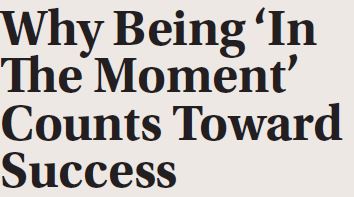Sales: The Art Of The Presentation

First in a two-part series.
The opportunity for formal presentations to prospective or current clients is invaluable. You can solidify a relationship, gain a new client or even expand your business with an existing client.
Promotional products salespeople, both distributor and supplier reps, are experts at sales calls. These kinds of calls are typically with established clients or more casual contacts, and the purpose is to work on current projects or perhaps start on a new one.
A formal client presentation is different. These presentations are designed to introduce your company to the client and to establish a working relationship. For distributors, these meetings may be the final stage of a Request for Proposal or another long-sales-cycle process. The lead salesperson will determine if a formal presentation is the appropriate way to proceed for an upcoming client meeting.
Preparing for presentations is time-consuming but without a plan, you may miss crucial information. Equally important is to avoid wasting time with tedious information that the audience already knows or is not interested in. There is a fine line between showcasing and delving into a detailed and complicated history that is irrelevant to the audience.

Congratulations! You have scheduled a presentation with a company that is not currently a client. Perhaps your neighbor works there, or you were referred by another client, or you met someone at this company on a plane. The opening to connect with a new prospect is perhaps the toughest meeting to land. As you prepare, think about what you want to accomplish. Here are the primary goals you should have for this presentation:
- Introduce your distributorship to a client or company that knows nothing about you.
- Clearly articulate your organization’s strengths and core competencies.
- Demonstrate a pattern of success for your clients.
- Create a personality and identity for your distributorship or line.
- Propose a working relationship or ask for the sale.
So, with these goals in mind, what type of information should you include? You will want to tailor each presentation to the specific client, referencing any particulars you discussed prior to the meeting. Your meeting will have a time limit; you must decide what to cover in detail and when to simply present a high-level view.
The following are the elements typically included in an introduction presentation. Remember, these are optional. Decide what information you are comfortable sharing and what you want to hold for other conversations. The point is to make a positive lasting impression.

Build your credibility and start with a brief history of your company, including years in business and significant milestones. A milestone may include opening a new office, adding warehouse space, significant new hires, awards won, mergers, community involvement and new offerings, such as online stores.
If it’s impressive or relevant to the meeting and your prospective client, list your company principals, owners or key individuals. Include a brief bio or line or two that shows their expertise, industry standing or experience. You may want to include individual or group photographs.
List the ways you help clients use promotional products. For example, safety programs, employee reward programs, company stores, etc.
Showcase the services you offer. At a high level, list all the services you provide such as drop shipping, custom awards, warehouse and fulfillment, on-site decoration, etc. You may want to talk about any areas you specialize in, such as awards or apparel.

You previously listed your strengths and services. Next create a master document that discusses each in detail. It is worth a one-time investment to create these materials for every service or strength, so you have them when you need them. Then for each presentation, choose the two or three that you want to present to this particular prospect. For each one, consider:
- Detailed process. Perhaps use a diagram or pictorial that shows how your business provides that service. You could have a diagram of your drop-ship order process or a process to develop custom awards. Demonstrate to the attendees that you are a smooth-operating shop, easing their concerns about quality, service and your ultimate ability to deliver.
- Case studies. Use actual stories from your clients that show the value you brought to that client, why the product or program worked so well and the results. This can be as long as a page or a few bullet points. Bring your capabilities to life by adding visual interest. Use photographs of products from your case studies or key personnel and teams, office and warehouse spaces, showrooms and awards.
- Show off your marquee or select clients (with their permission). Display their logos or list the corporate names of your best clients. Include a snippet about the programs or service you provide for each one. If possible, ask for a quote or testimonial and let the prospect hear what your current clients think of your work.

We are in the branding business; our presentations also represent our brand. Create a template using your colors and logos. PowerPoint is still a good tool if showing your presentation on a screen. Prezi is a newer, web-based presentation tool that uses motion and zoom functions. Design your presentation so it is easy to read. For example, dark backgrounds with white type can be harder to read than a light or white background with dark type.
Whether you use presentation software, a video or simply letterhead or plain paper, put together a professional package that clearly displays your company name, logo and tagline on each page. If you leave a copy with the prospect, include your address, phone number and email address as well.
Your writing style needs to match your delivery style and company culture. A prospect will be able to tell if you are uncomfortable with what you are presenting. Some outfits are formal and have built a business on that reputation. Others promote a casual and fun-time environment. Be consistent so your prospective clients experience the same “feel” with your initial presentation as they will get when working with your internal account services team.

Weave elements through the presentation that will reinforce your message. For example, you may include a call-out box on each page with a client quote to underscore your customer satisfaction. Distributors can include industry statistics about the effectiveness of promotional products as marketing tools to demonstrate that you provide ROI to your clients. If you excel with employee reward programs, find quotes about the importance of satisfied employees. You want to leave no doubt that you are the best match for this client.

At the conclusion of your presentation, summarize your key points. A chart listing your strengths against the prospect’s needs or a comprehensive list of your capabilities compared to their current spending categories or other pictorial will reinforce that you are the best partner to meet their needs.
You want the prospect to remember these things about you:
- What you say you can do for them
- What you proved you can do
- Why they liked you
Read Part 2, how to create a presentation to pitch an existing client on a new opportunity, in the December issue.
–––––––––––––––––––––––––––––––––––––––––––––––––––––––––––

Tango's No. 1 tip for an effective presentation is to be "in the moment."
When presenting to a client, whether for information, product selection or as part of the Request for Proposal process, you are the presentation, so be engaged in the moment. Let your energy, interest, knowledge and expertise show.
To be in the moment, pay attention to:
The presentation content:
- Make it pertinent to the client's needs
- Make it engaging, energetic and worth the clients' time
- Make it brief
The details:
- What will you leave behind that speaks to your creativity, organization skills and fun nature?
- What's appropriate attire for this client?
- What message should they take away when you're finished?
The client:
- Make a connection with as many people in the room as you can
- Make eye contact, ask personal questions, offer a solid handshake and smile
Focus on client reactions. Are they paying attention, taking notes, asking questions? Do they seem uncertain of a point you're making?
–––––––––––––––––––––––––––––––––––––––––––––––––––––––––––


We know it's easier to delve deeper into an existing account than to develop a new client. Your goal is to expand your contacts and move into more departments, divisions, regions and even additional headquarters. Referrals pave the way; references simplify the process.
First, build the relationship and your reputation. Ensure that your personal brand is a positive one. In addition to being creative, providing excellent service and ideas and keeping your promises to the client, try these simple ideas to help grow your business.
Be visible and nice to all
- Be seen at your clients' office (walk the halls) and be generous with your personalized products; leave gifts with more than just your buyer
- Talk to the receptionist; sincere conversation brings contact information
- Be nice to everyone; you never know who'll be promoted
- Respect their time
- Know your contacts as real people, not just as dollar signs
- Know your contact's team members by name
Feed people
- Bring in food not just for your contact but periodically for the department
- Create expectations: bring snacks and treats, especially around holidays
- Leave food in the break room along with imprinted napkins or serving pieces to identify your company
- Hold a Lunch and Learn at your office or your client's office
Plan trade shows
- Hold a show for your company's client case. Invite your contacts to include others from their company or, even better, ask for names and issue the invitations yourself
- Hold mini shows specific to the client; bring in two or three suppliers that are appropriate to their needs
- Hold the mini show in your office to show off your showroom "think tank"
- Hold a show in the client's office and encourage contacts to bring others. Bring samples from your showroom and/or invite a few suppliers to join you. Remember to bring giveaways with both your company name and the client's logo
- Take your clients to your regional association's end-user shows
Market your ideas throughout the organization
- Share information within different departments; cross-sell for better pricing for all
- Provide product and virtual specs appropriate to specific departments
- Share examples and samples of other work within the company
- Maintain an idea folder for the client so you're always prepared with fresh suggestions
Always ask:
- Request referrals and references
- Ask for a counterpart in another department, division or location
- Find out the name of your contact's friend who purchases for a different company
- Ask about upcoming or annual company events and who handles them
- Ask about other departments that purchase
- Find out about the company's goals that aren't on their website
Communicate regularly and properly
- Send emails, letters and thank-you notes with ideas, pertinent links, your whereabouts (industry show) and articles of interest
- Share relevant presentations and PowerPoints
- The phone is the best tool for making contact or leaving a message. Also change your voice message regularly
- Share links to webinars and videos to communicate with multiple divisions within a client company
- If you use social media and blogs, be careful what you say and do
- Look at your website. Are you proud of it? Does it represent your professionalism?
Source: Tango Partners
–––––––––––––––––––––––––––––––––––––––––––––––––––––––––––
Leigh Canavan, a marketing director who has both given and observed numerous presentations, wrote this article for Tango Partners, a consultancy specializing in the promotional products industry. Clients utilize Tango’s experience and support with their Request for Proposal (RFP) process. Formed in 2005 and located in Atlanta, Georgia, Tango works with distributors in new business development, marketing and promotion. www.tangopartners.net or 404-846-1900. Email mlonde@tangopartners.net.

